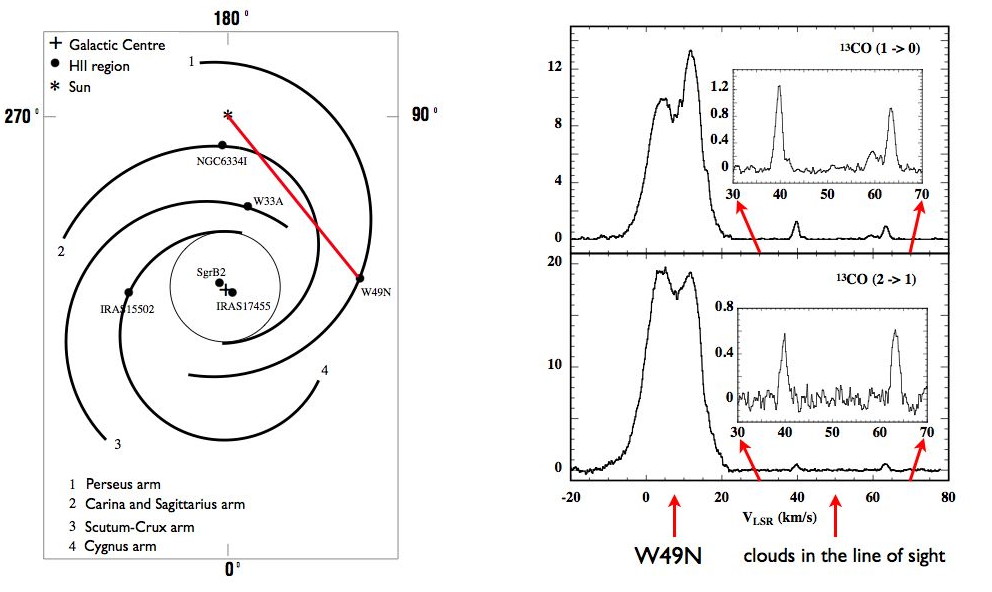Partners & Projects//Herschel Key Program
Last update 03-02-2009 03:27 pm / Antoine GusdorfBack to topic Partners & Projects

HSO (Herschel Space Observatory) is a European project for sub-millimeter observations scheduled for launch mid-December 2008. This is the 4th cornerstone of ESA's Horizon 2000 program. Three instruments (HIFI, PACS, SPIRE) will be placed in the focal plane of the 3.5 meter telescope and are designed to study the universe in the far infrared and submillimeter wavelengths. The observatory will orbit around a virtual point in space known as the second Lagrangian point (L2) in the Sun-Earth system.
In this Guaranteed Time Key Program, for which we obtained 128 hours, we propose to study many molecular species: hydrides and carbonaceous agregates. Hydrides contain the elements H (Hydrogen), D (Deuterium), C (Carbon), N (Nitrogen), O (Oxygen), F (Iron) et Cl (Chlorine).
Eight Galactic sources are identified as targets for our proposal, and are mainly massive star forming regions surrounded by dust grains responsible for a strong continuum emission in the wavelength range studied here. Most of these sources are distant and molecular studies revealed many molecular clouds along their line of sight, identified through a shift in velocity with respect with the velocity in the local standard of rest (VLSR).

The above left figure presents some of these star forming regions in the Galactic plane: the line of sights cross the spiral arms several times, in which most of the Galactic material resides. The above right figure shows the 12CO (1-0) and (2-1) molecular emission towards W49N, that emits at about 8 km/s, as well as molecular clouds in the line of sight (between 30 and 70 km/s).
This program aims to detect a large number of molecular species, in absorption as well as in emission, depending on the kinetic temperature and density of the medium in the line of sight of the bright continuum source, and on the molecular spectroscopic parameters (e.g. A Einstein coefficient).
This Herschel programme is dedicated to the detection and study of key molecules, which are not accessible from the ground at FIR/submillimeter wavelengths (low atmospheric transmission), but which bear essential information on the physical and chemical processes ruling the ISM, and on the growth of molecular complexity. With his hight spectroscopic and spatial resolution as well as with its high sensitivity, HSO presents a unique opportunity to study these molecules that have been looked over with previous space missions like ISO, SWAS and ODIN.

